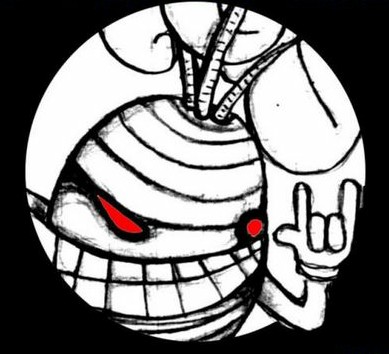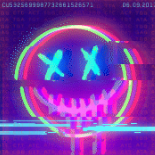I understand that sharing video, photos, documents etc. is relatively safe because the data is not executed in the processor as instructions. How come people are willing to download and install pirated software though? How can one be confident that it does not contain malicious addons? Are people just don’t know the risks? Or are there protection mechanisms that I am missing? I mean since the software is usually cracked there is not much use in comparing checksums with the originals, is it?
Worth noting that paying for a license for software doesn’t stop it being spying malware either. In fact the pirate versions often take out the spying and the reporting-to-homebase that proprietary software does.
The photoshop that phones home to check a license is arguably more malicious than the pirate version that has been cracked so it doesn’t do that.
Good and valid point. I use opensource software wherever I can.
Though paid software is not going to encrypt your data for ransom or use a keylogger to steal bitcoin (yet).
There was an antivirus that was caught running a bitcoin miner in the background tbf. If memory serves it was Norton?
It was opt-in, and I think to make your subscription cheaper. Then again, Norton sucks!
atleast they admitted it, still don’t trust mcafee though…
Long story short.
- Be prepared for disaster.
- Scan it. Sandbox it if concerned.
- Firewall inspect/block/allow every outbound comm.
- Get it from a trusted source.
Basically the same stuff you should be doing with all software.
Edit for firewall clarification.
What software do you recommending for scanning? Microsoft defender?
I don’t really use Windows except for playing games, so someone else may have a better answer.
For me, I want 3 types of protection, priority order.
-
Rootkit and ransomware protection. Lock down and protect system files.
-
Firewall. Stop software from calling home (and possibly invalidating my forged license) and to stop malware from reaching out to command and control systems.
-
Malware scanning and suspect execution detection. Most antivirus software detections will be in only one of a couple categories: keygen, generic trojan, or obfuscated executable. If I encounter this, I go to VirusTotal.com and drop the offending file(s) for it to scan. If I’m still concerned I will use an online sandbox execution recorder that tells you what the exe does such as outbound comms, file modifications, registry read/writes, etc.
Windows Defender accomplishes these requirements. Although it is a bit clunky and other mainstream antivirus (paid or free) accomplish the same in a much cleaner interface.
I cannot stress enough the importance of downloading pirated software from a trusted source.
We are seeing on our corporate network lots of browser hikackers that connect to c&c and are used in botnet DDOS as a service. Once you install x software it sets up a persistent service that keeps modding chrome.exe etc
Firewalling the .exe that you installed does nothing to stop the calls to c&c
Fair point. Malware can tunnel through existing comms, thus firewalling the exe would do little to protect you.
That’s why I recommended a multilayered defense and practicing good opsec.
An exe that installs a service, modifies unrelated executables, and sends comms through an unrelated application would be a catastrophic failure in any good defense.
If your system is this wide open then you’ll be likely to have all sorts of problems from non pirated software. Such as freeware that installs adware.
I have tried to find these in the wild to no avail.
Unfortunately the machines that get infected are not fully controlled by us but they get networking and internet from us (space rental in the building), so we isolate them as much as possible and we black hole all the bad traffic on the router level.
Our machines all have EDR and strict security policies. Not much gets past that.
Right on. Gotcha.
-
Is it smart to test if it is malicious in a vm first?
I don’t.
But I take many precautions.
I’ve been pirating software since the C64. About 40 years. Never stopped. Never will.
I buy the good software I encounter. As a developer, i know it’s important to keep funding further development. Unfortunately most is overpriced garbage.
I’m pretty new and extremely cautious with pirated software, i still need to find the precautions i have to take, luckily pirating games is much safer and easier than pirating software
Could you elaborate how pirating games is “safer” than pirating software? Both are executables that could run whatever code they wish on your system, and since pirated games are so desirable, in my experience they are far more often spread around bundled with malware than software is. Oftentimes, you’ll find people take legitimate repacks, add malware, then share the repack under the same repackers name.
I think their idea is that if you know a specific repacker like an athletic woman, compared to downloading softwares that could be uploaded by any elitists trying to fuck with you.
In practice both are the same, but the reputation of the athletic woman makes her more trustworthy.
However outside of that specific repacker I actually agree with you, it’s exactly the same lol.
Interesting. If there are reputable packers / crackers, why do they not uses GPG to sign the software? That way, no one can manipulate and reupload the software.
Many do provide some form of checksum.
It feels safer as there are a few sites with a good reputation which is just easier to find which makes me feel safer. Idk if it is really safer than with software.
I trust pirates more than billion or trillion dollar companies. Also, aggressive DRM such as iLok is worse than malware, so eh.
Fuck iLok. Shit made me regret buying plugins, should have stuck with piracy.
It’s partly an honor system but also, anyone distributing malicious cracks are quickly called out whether its on public tracker comments like PirateBay or removed from private trackers.
Distributors of GOOD and CLEAN cracks often earn good rep in the community too, like Monkrus which I’ve had no issue with before.
Also, in my experience, installing a malware-packaged adobe app isn’t actually all that bad if you run a malware scan immediately afterwards. With the scale and breadth of software piracy there isn’t much money in making advanced malwares beyond bundling an existing one into an installer. I don’t recommend it, but it’s still easier and cheaper than paying Adobe!
TLDR the community polices itself pretty well considering.
Also, I would consider some legitimate licenced software more of a malware than a cracked one. If your software forces always-online license, comes with annoying startup processes, nagging ad screens, etc, it’s malware. And if there’s a cracked version without those things, I’ll take the cracked version any day.
I agree with the sentiment, but coin miners and ransomware are of course a lot more obtrusive to the average user’s experience than the malware you’d associate with most proprietary licensed software. I can see why people are less willing to risk it.
I agree with what you said, but how do I make sure that the cracked software is not further altered by other people and uploaded. Do you just select the torrent with the most peers? Is that enough? When using one-click-hosters it is even harder…
No. It isn’t about the torrent with most peers. It is about the source and the uploader. As someone has already mentioned it, it is about the Reputation!
Sorry, I am not very familiar with torrents. How can I verify that a torrent comes from a certain person? Everyone can make modified copies of the original data and uploadtorrentss that look alike. How can I avoid those?
It’s hard! A lot of it is, like I said, reputation. Sources of safe pirated and cracked software are maintained mainly through word-of-mouth - The crappier and dodgy sources will always invest into SEO to get to the top of the results, and are more likely to avoid legal trouble as companies appreciate that malware-infested installers actually help discourage new pirates.
Also, there’s generally little incentive to go beyond the basic modifications. Most online scams, even outside malware, cast the net as wide as possible and even go out of their way to avoid complexity. They get the most money out of scamming new and uneducated users who pay up quickly. The same logic means they want advanced users to know it’s a scam to avoid wasting time on targets who won’t bother paying anyway.
I bet there are exceptions to this rule, but since scamming and malware are such low-profit ventures there’s a lot of incentive on quantity over quality.
You’re thinking too technical about this. This is a money thing. Personally speaking pirated software/games were chicken soup for my poverty ridden childhood.
If i were to pay for an AutoCAD license , it would be over 200$ A MONTH
What kind of cheap-ass, stripped down AutoDesk suite are you getting for $200/mo. Last I checked, the architectural suite was north of $4500/yr.
I just use paint
Technically you can do all the same things with paint and a LOT of patience.
That’s why I’m learning Blender, I think I’ll be able to carry on without Maya.
Adobe isn’t pretty but Autodesk is a scourge
Maya is probably the best program to have known before Blender. Blender was definitely geared from day one to be switched to from Maya, 3dsMax and Lightwave (back in the day).
In other news, Autodesk is constantly accusing the company I work for of stealing licenses even though we over purchase licenses. They can go to hell.
I Love blender. I am also learning it but more because it works on linux unlike AutoCAD
Blender is fully capable these days, have fun!
If you get the software from reliable source, it is almost certain it does not have malware.
The piracy is an organized activity and people at higher rank nuke the release if it has malware.
Read more here https://opentrackers.org/i/2600_Guide_to_Internet_Piracy-TYDJ.txt
This. It feels more likely to get malware-infested downloads from no-name warez websites than trusted trackers.
How come people are willing to download and install pirated software though?
You can just remove “priated” from that statement and come to the same conclusions. Considering the amount of bugs, backdoors and 0-day exploits distributed via official software I sometimes wonder why people execute proprietary, closed source programs at all.
An no, “reputable” companies mean nothing, just look at Microsoft clowning around with their signing keys.
You severely underestimate the power of free stuff
i mean you could always sandbox it
Sandboxie-plus for the win! Saved my sanity several times.
What do you run on the sandbox to check if the downloaded software is safe?
unless your scanning for vulnerabilities somehow or the system breaks you dont
It’s just isolating potential damage
really theres little reason to even use non-foss paid software…
I wish that was true
There a reason if the alternative doesn’t exist or isnt good enough.
Based
Exactly. Piracy extends the commercial ecosystem. Every software pirate is a potential user and contributor of FOSS projects who is instead spending their time and talents working on/with commercial offerings.
To a distributor of commercial software, a pirate user is preferable to a user of a competing product. The competing user is already locked into the competition’s product line; the pirate is expanding your own product line’s market share.
Below the competing user is the FOSS user: it is much easier to monetize a pirate user who likes the system enough to steal it, or a competing user who has demonstrated they are willing to throw money at their problems. FOSS users aren’t willing to tolerate all the artificial limitations imposed on the product to increase profitability.
I have no moral or ethical qualms with piracy as a general concept, but software piracy inherently promotes commercial alternatives at the expense of FOSS products. The only software I have pirated in decades has been rare, niche software for very specific uses.
hit the nail on the head.
Unfortunalty most professional Autodesk software have no viable FOSS alternative (except Blender)
whats wrong w blender ?
I meant only blender is a solid contender to 3dsmax or Maya. Other Autodesk products like autocat. Civil 3d. And Revit don’t have any solid Open source alternative.
I sorta agree with @darcy. The quality of FOSS (nowadays) is pretty damn good. If I need something I look at FOSS first, dig in github, and then finally look around for a paid program.
Edit to say “paid” program.
I feel safe, maybe I shouldnt, but my life wouldnt be this good if I didnt have access to everything I cracked lol
Your assumption is wrong mail can contain executables. Picture can hold executable instructions and so do videos. For example videos and pictures in mail can contain virus. You are not safe just because you download movies and pictures
Can you explain how can a picture holds a executable in it? Also you have to make the file executable to run it. Something like
chmod +x random.mp4You are thinking it wrong about malware in pictures. They don’t act like an executable rather then injecting instructions to an executable program you are opening your picture in. In that case you don’t need the +x flag on your file. Think of it as a Trojan horse
https://gizmodo.com/malware-images-virus-photos-pictures-how-block-antiviru-1849572516 If you are more interested
I think it is very rare to find or even craft a video file that is able to allow for arbitrary code execution on an updated video player software like VLC. The same is true for photos or documents with the exception of office documents using macros.
“Updated” is doing a lot of heavy lifting here. Lots of people don’t keep their software up to date.
But yeah, the likelihood of any of us randomly happening upon 0days in the wild is pretty low.
Not at all. I work with development of various kinds and have my desk close to our senior it security specialist he says that we get daily that kind of stuff in our emails so I don’t see why they should exist less on pirated torrents
maybe you mean like exe files disguised as pngs?
actual malicious image files are extremely uncommon (and target specific image viewers of outdated versions, like imagine an archaic os like windows 7 or xp); libpng/libjpg that are used in most popular image viewers are open source and do not currently have any significant (discovered/publicly known) vulnerabilities
One of the techniques is called buffer overflow. Where you target a flaw in some software. Computers are logic, they will do EXACTLY what you tell them. Imagine if an image viewer uses an dll to process jpg. That dll expects a very specific header. If this is not handled correctly and a malicious attacker crafts the header to be slightly larger and the larger part contains executable code. This code spills over in the adjacent memory area. The OS then reads this as code to run… and boom you are in.
This is oversimplified and proberly not explained correctly, but its something like that; and that kids, is why its important to update your OS and software.
Sometimes they find bugs like this, that have existed for many years before being discovered.
Meh, how is surgery a thing? You let people just open you up and dig around your insides?
it’s a mix of need and belief in a proper vetting process. For computers there’s the additional layer that any one machine is probably low stakes. In early internet days most software was prohibitively expensive but gave you the equivalent of super powers - as a teenager / young adult with ability to take that risk you’re not going to do it?
Well, I prefer to go the hospital with licensed personnel and not to ask some guy on the internet to perform surgery…
And where those are illegal or prohibitively expensive you have people either traveling to less regulated countries or even straight up illegal operations.
Eg., black market transplants.
If I get malware, I can just go reinstall my OS. If I pay for software, I’m never getting that money back.
If you notice the malware…
And have something worth loosing on gheir PC. Many professional software users using cracks may worry of losing their work files which could be easily backed up.
As long as they dont have their financials or personal information thats worth stealing, the cost saving of the pirated software is worth infection, which at max needs a fresh install.
Most people access their email account from their pc (with the password stored unencrypted locally in the email client or the browser).
The email account is tied to all of their accounts.deleted by creator
More reason to have MFA?
any accounts are worth stealing, especially stuff like Google/iCloud, Discord, (Reddit and Instagram accounts are pretty expensive too if you have them for some reason), and game accounts.
losing**
I have a two PC setup, I treat the windows one with the pirated software as always potentially infected so the potential damage is limited. It’s probably not infected though, I do take the most basic precautions and haven’t had issues with malware for many years.
That’s smart, but requires extra work and hardware.


















